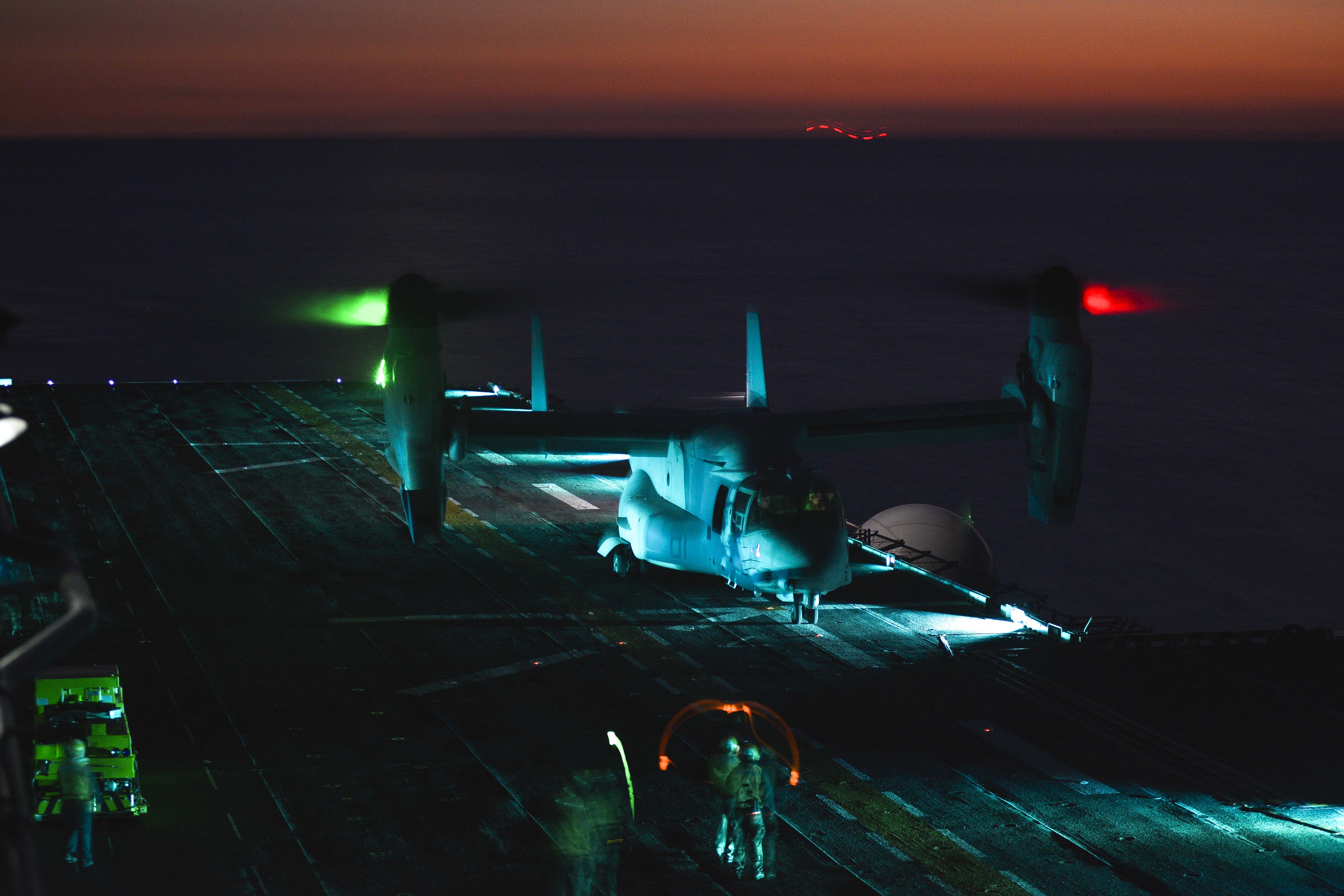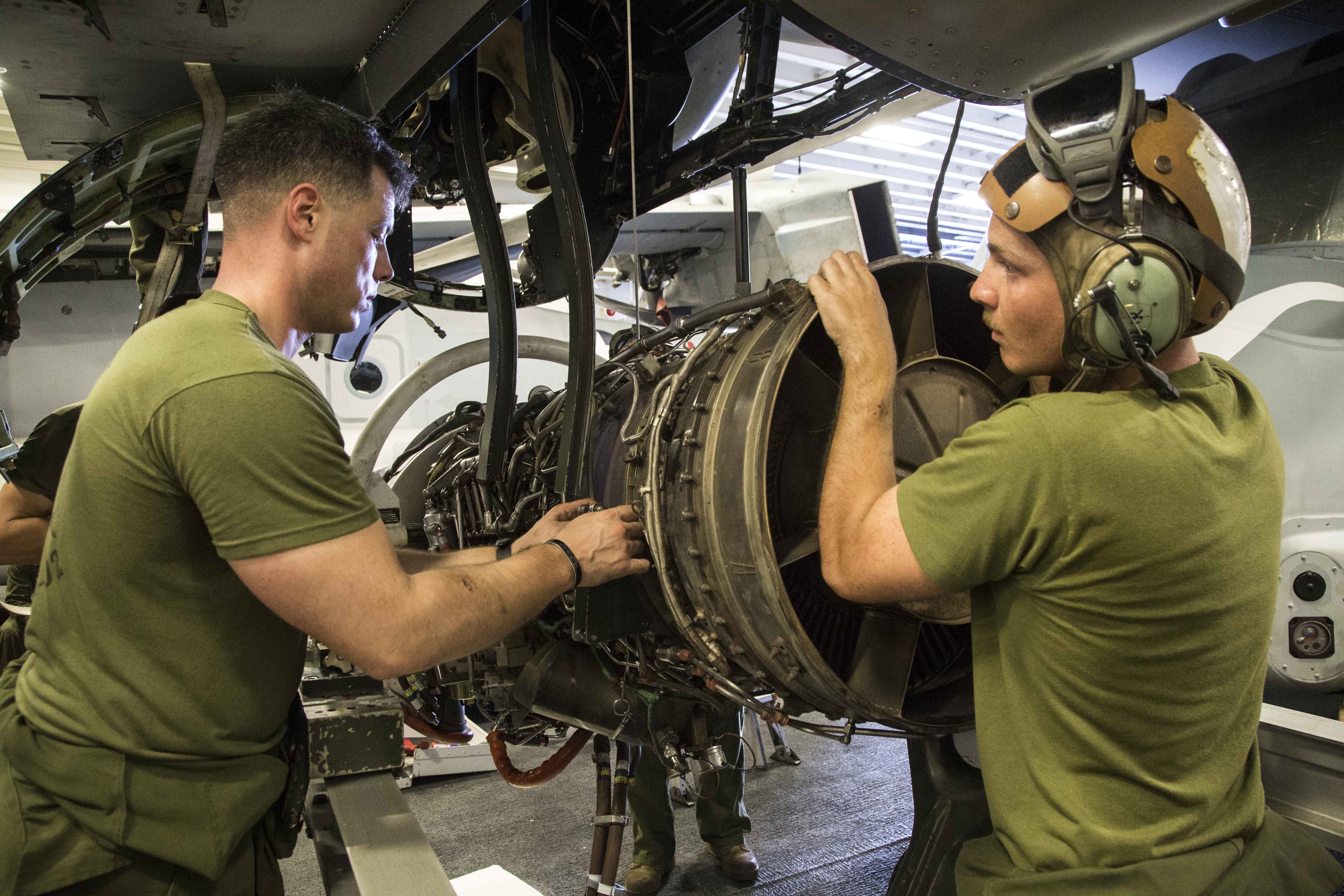
Naval Air Systems Command has begun its effort to reduce the Marine Corps’ fleet of MV-22 Ospreys from more than 70 distinct variants to about five, after awarding the Bell-Boeing Joint Project Office $57 million to get started on the Common Configuration-Readiness and Modernization (CC-RAM) program.
Having much-increased commonality throughout the Osprey fleet will boost readiness through simplifying the maintenance efforts on the planes, while also generating savings in the supply chain and making operations easier on pilots, V-22 program manager Col. Matthew Kelly told USNI News.
“By increasing the commonality and readiness across these aircraft, the Marine Corps is trying to set up the V-22 for the next 20 years of its service, because it’s been so successful in performing missions for the Marine Corps that no other platform can do,” he said in an interview.
Since Osprey production began in 2004, the Marines have continued to insert reliability and capability improvements into the production line – which not only incurs a cost on the acquisition side, but has made maintenance, operations and logistics a headache. Even within a single squadron, pilots and maintainers may have to work with different configurations that have wires and switches in different places, have different safety and mission capabilities, and require different spare parts.
To address this, the CC-RAM effort will send about 130 V-22s through Boeing’s Philadelphia production line for an eight-month effort to tear apart the planes, make all changes needed to bring the planes up to today’s configuration coming off the production line, and then put the aircraft back together. Any future reliability or capability improvements would be inserted into later rounds of CC-RAM that will likely occur every five or six years – with Marine Corps acquisition of V-22s ending soon, it would be costly and eventually impossible to continue inserting these upgrades in the production line, Kelly said.
“We probably took over a year to come up with what we thought was the best list of modifications for CC-RAM, and we started with essentially what’s coming off the production line now. We have been making reliability improvements over time, and so what’s coming off the production line now is the result of our basic design plus all of the things that we’ve done over the years to make this a more reliable aircraft,” he said.
“We looked at all of the things that gave that newer aircraft better reliability and then that commonality with the rest of the fleet. So we wanted to make sure that, say, a pilot that goes to any of these aircraft sees the same thing – but even more importantly, that any maintainer that goes to one of these aircraft from an electrical perspective, from a maintenance perspective, that they are looking at the same thing too. And that’s huge from a readiness perspective because now we’re talking about not having that maintainer need to worry about which version do I have, what configuration am I in, to look at what instruction he has to go to. We’re really talking about, I don’t need to worry about that because it’s a V-22 and I know what a V-22 looks like, and they all have wires in the same spot that do the same thing. So that increases troubleshooting. It also has benefits across our supply chain – we have one set of parts, we have one set of maintenance documentation, we have one set of support equipment that supports that common configuration.”

But even for some of the smaller changes, he said, “different is different, right? If I need another set of maintenance instructions or potentially more pages in my flight manual to try to tell me, if I’m flying this aircraft do this, if I’m flying that aircraft do something else.”
“It’s everything from wiring; it’s upgraded electrical generators that support more equipment; it is the cockpit configuration, where all the buttons and switches and radios are in the same spot for the pilot, they’re not worried about where that switch is on which aircraft they’re going in today. It plays a role for the pilot – I would say the even bigger role though is from that maintenance perspective,” Kelly added.
The first contract modification for $57 million covers work instructions for disassembly, incorporation of the upgrades and reassembly; tooling; and a single prototype V-22 to prove out the instructions.
The colonel said it would take upwards of a year to complete the first Osprey, but that subsequent aircraft should take about eight months. The production line in Philadelphia should eventually be able to handle 24 aircraft at once, though the program will start slow – two vehicles in the first year of production, followed by five, then 10, and eventually ramping up to 24. The first contract award will be for one year plus options for four more years, totaling 51 V-22s plus the prototype.
“As we get started – and we’re still in negotiations really on the recurring cost for the additional aircraft – our biggest concern is making sure we are getting a good price in our negotiations and making sure we are getting a good value for the taxpayer as we negotiate over the next few months what each aircraft is going to cost,” Kelly said.
“We know these modifications have really all been done on other aircraft, or in the production line, so we know they work, but we want to make sure we can get them at the right cost.”





